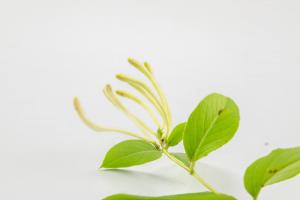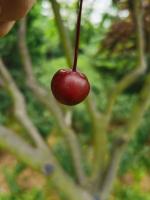Understanding Why We Put Stones on Top of Plant Pots
One common practice among gardeners is to put stones or pebbles on top of their plant pots. Some people do it for aesthetic purposes, while others claim that it helps with drainage or prevents soil from escaping. But why do we really put stones on top of plant pots? Let’s dive deeper into the reasons behind this practice.
The Aesthetics of Stone-Topped Plant Pots
Stones or pebbles can add a decorative element to your plant pots, especially if the stones are colorful or uniquely shaped. This practice is especially popular for indoor plants or gardens that are in more visible areas, such as a balcony or porch. The stone topping can also give the plant pot a more natural appearance, especially if the pot is made from a synthetic material.
The Drainage Benefits of Stone-Topped Plant Pots
Another reason why some people put stones on top of their plant pots is to improve drainage. When you water your plants, the water goes through the soil and comes out of the bottom of the pot. If there’s no space for the water to escape, your plant roots can become waterlogged and start to rot. By putting stones on top of your soil, you can create pockets of air that allow water to drain more efficiently. This can help prevent root rot and other water-related issues.
The Role of Stones in Preventing Soil Escape
Sometimes, when you water your plants or move them around, soil can spill over the edges of the pot. This can create a mess around your plant, and potentially harm the plant itself. By placing stones on top of the soil, you can create an extra barrier that prevents soil from escaping. This is especially useful for plants that need to be transported frequently, such as when you move house or rearrange your garden.
When You Shouldn’t Put Stones on Top of Plant Pots
While there are some benefits to placing stones on top of your plant pots, there are also situations where you shouldn’t do it. For example, if your plant needs constant moisture, such as a fern or a peace lily, you don’t want to create pockets of air that promote drainage. In this case, it’s best to avoid placing stones on top of your soil. Additionally, if you’re using a porous pot material, such as terracotta, the stones can actually prevent water from evaporating, leading to overwatering and root rot. In these situations, it’s best to skip the stone topping and focus on other methods of improving drainage and soil retention.
Conclusion
Placing stones on top of your plant pots can be a useful practice for improving drainage, preventing soil escape, and adding a decorative element to your garden. However, it’s important to consider the specific needs of your plants before implementing this method. Ultimately, the decision to use stones on top of your plant pots should be based on the individual requirements of your gardening space and the plants that you are growing.

 how many times do yo...
how many times do yo... how many planted tre...
how many planted tre... how many pine trees ...
how many pine trees ... how many pecan trees...
how many pecan trees... how many plants comp...
how many plants comp... how many plants can ...
how many plants can ... how many plants and ...
how many plants and ... how many pepper plan...
how many pepper plan...






























